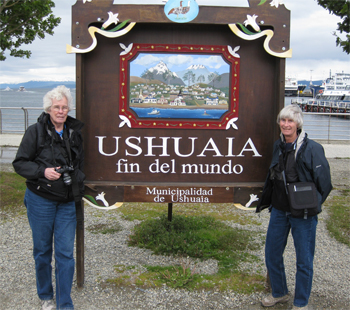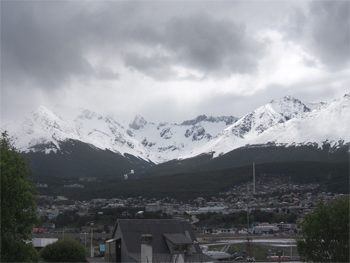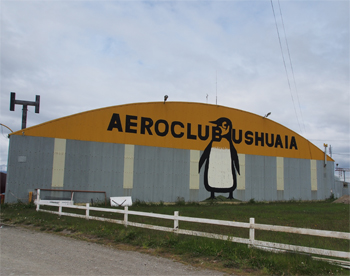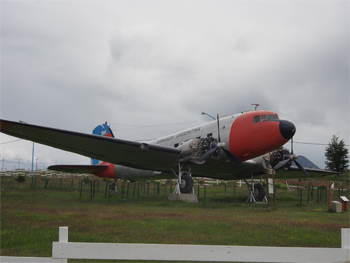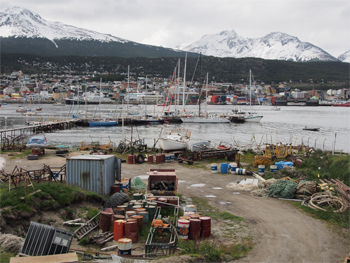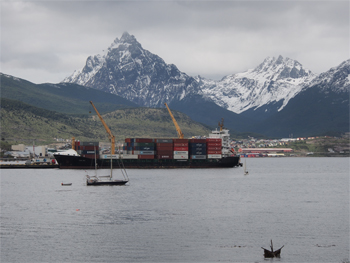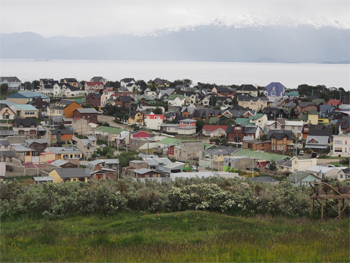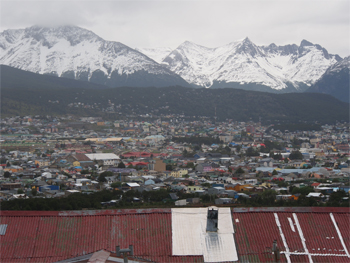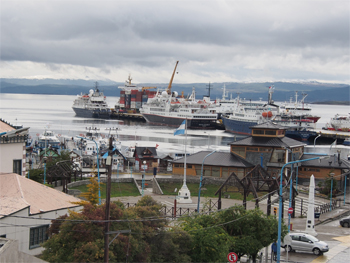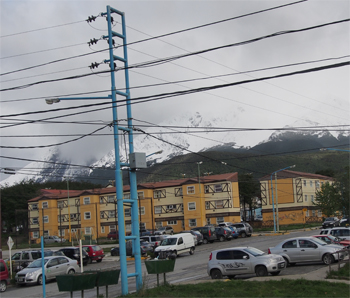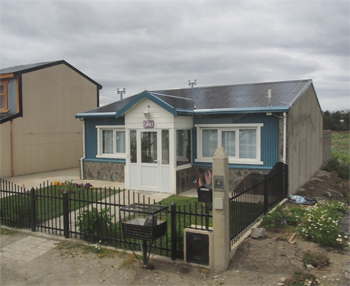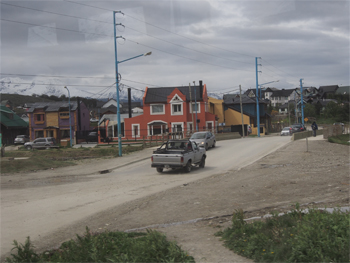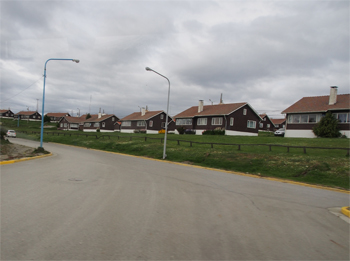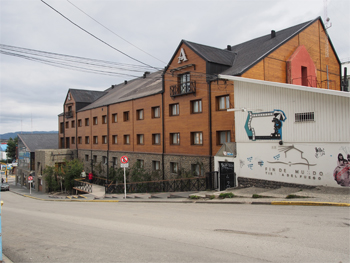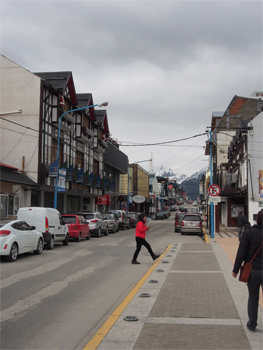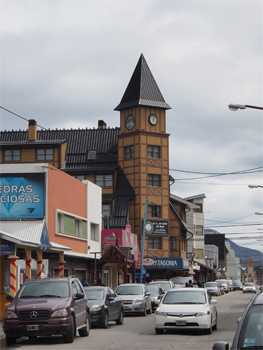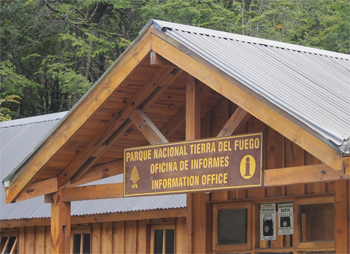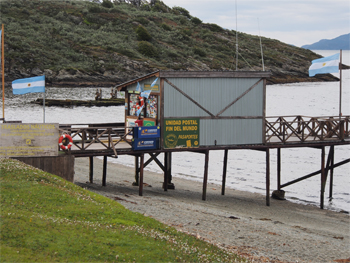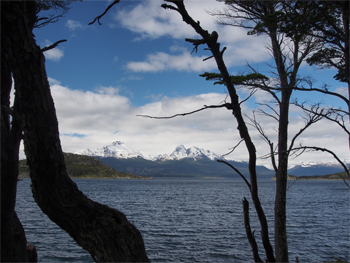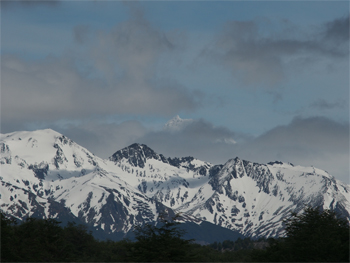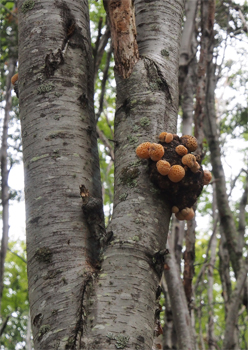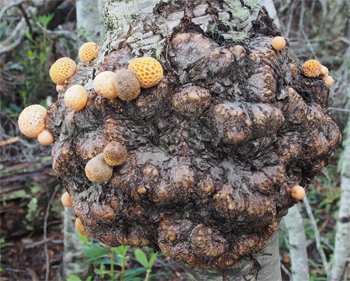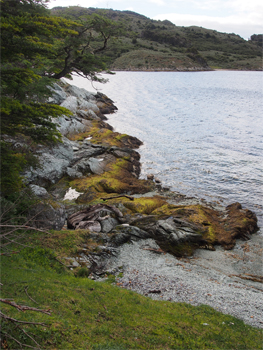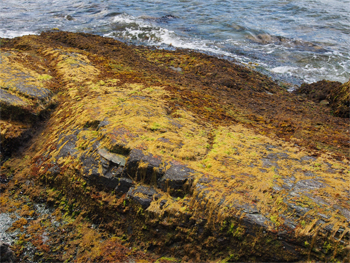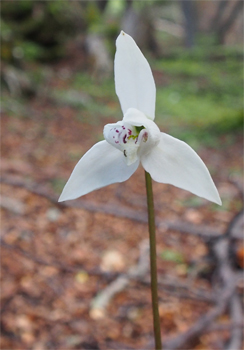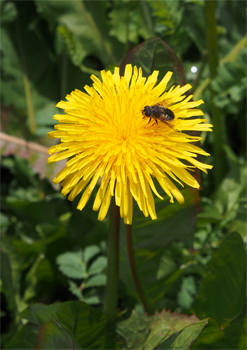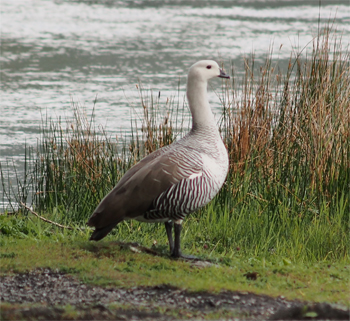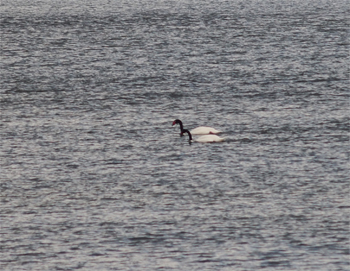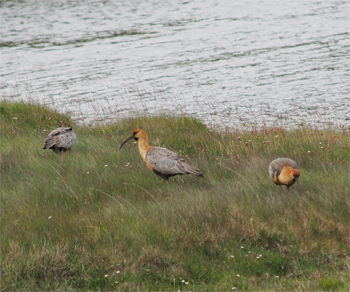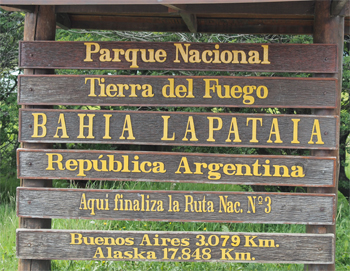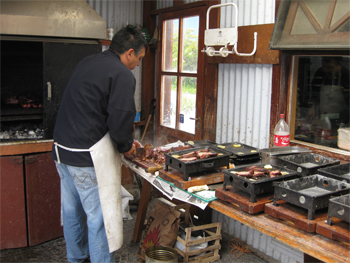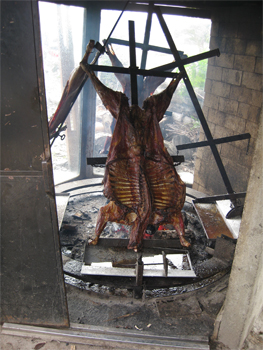Sat., 12/22/12 - (The world did not come to an end!) - Buenos Aires to Ushuaia
This morning we flew from Buenos Aires to Ushuaia. In Ushuaia we boarded a bus and were driven around this city of 60,000 people at the southern end of Argentina. We stopped at three panoramic viewpoints but by the third one, the cloud had descended and it began a misty rain.
The latitude here is 55° south (Glasgow is 55° north) but the temperature only swings 10° C from summer to winter because of the influence of the oceans.
Us at the southern end of the world
Ushuaia - town and mountain views
Sign for the local Aero Club
Old DC-3
Ushuaia town and harbor
Ushuaia harbor and mountains
View of town from a hill
Town and mountains
Harbor, Corinthian II is furthest forward in line
Typical housing
Neat little house
Houses and roads
More housing
Albatros Hotel - our place in Ushuaia
Main street
Main street - clock tower
After a briefing by Fede on Antarctica, we went out to find dinner. Crab legs are a local specialty but we declined having a 450-peso crab dinner. That would have been about $90 US! We found a nice place, Mustacchio's, on the main street and had a wonderful meal and a nice waiter. I had rolled lamb and yams and Marge had two large pork shoulder fillets grilled and served on a dish sitting on a charcoal burner. Everything was melt-in-the-mouth good.
Sun., 12/23/12 - Ushuaia to the ship, Corinthian II
To occupy the time between checking out of our hotel and embarking our ship, we visited Tierra del Fuego National Park, which is the southernmost national park in the world. It is very large and has snow capped mountains (Andes some over 1,000 meters), forest with all three kinds of beech trees (Lenga, Guindo, and Coihue) and a marine coastline. There are also peat bogs that have filled in old glacial lakes.
During our stroll through the forest, our local guide pointed out dog orchids, yellow violets, the Califati plant with edible blue berries and straight stems that the natives used to make arrows. There was a lot of green mistletoe growing in the lenga trees. The odd orange balls of Indian bread are parasitic but they are a type of mushroom that is edible before it spews out its spores. A plant that looks like rhododendron is called Cinnamon bark (Canelo) and was used to make a tea rich in vitamin C and prevented scurvy. The natives used its long straight branches to make harpoons. The soil is very poor here and only 2 cm deep above the rock. All the plants and trees, therefore, have very shallow, spreading roots.
Tierra del Fuego National Park headquarters
Passport stamping and post office in the Park
Looking out at Bahia Lapataia and mountains in Chile
Mountains in Chile
Pan de indio ("Indian bread" )parasite on the lenga tree
Pan de indio ("Indian bread" )parasite on the lenga tree
Shoreline at Bahia Lapataia
Shoreline at Bahia Lapataia
Dog orchid
Insect on a dandelion
Upland Goose
Black-necked swans
Black-faced Ibis
We stopped at Ensenada Bay on the Beagle Channel and at Lago Roca for short walks in the forest. At LaPataia we walked out a boardwalk for a view of the mountains. It is a very beautiful and unique landscape.
11,066 miles from Alaska
We bused back to town and ate a slow lunch at Hotel Los Nires. We had a salad bar, then grilled lamb and chorizos served on a charcoal burner, and some kind of flan for dessert. It took forever to feed all four OAT groups who are sailing together to Antarctica.
Lunch at Hotel Los Nires
Lunch at Hotel Los Nires
Corinthian II waiting for us
Before embarking, we wanted to shop for souvenirs - our last chance - but it was so late (and Sunday) that most of the shops were closed. Next trip!
